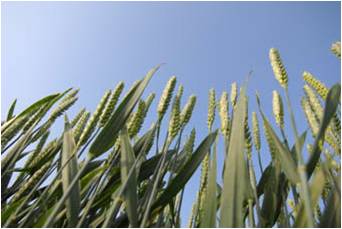Cambridge recently had an open weekend. Amongst other things, it included the colleges opening their doors and also, in some cases, their gardens and libraries. There was an Elizabethan theme as it is 450 years since Good Queen Bess visited the city; hence some colleges had wonderful Tudor manuscripts on display. One of the events was Evensong at Kings College in the presence of Queen Bess (a professional look-alike!) and her entourage in period costume with music and an order of service appropriate to that age. We really enjoyed the day.
the colleges opening their doors and also, in some cases, their gardens and libraries. There was an Elizabethan theme as it is 450 years since Good Queen Bess visited the city; hence some colleges had wonderful Tudor manuscripts on display. One of the events was Evensong at Kings College in the presence of Queen Bess (a professional look-alike!) and her entourage in period costume with music and an order of service appropriate to that age. We really enjoyed the day.
Whilst walking round St John’s Chapel my wife noticed a plaque on the wall in memory of Frederick Blackman, the plant physiologist who died in 1947. This brought back memories of university lectures. Blackman was the guy who worked out the details of gas exchange in plants during photosynthesis - during the day it was carbon dioxide in and oxygen out etc.
Blackman may not even have considered that his work would be relevant to the debate about climate change. For instance, a recent German report says that some species of trees are now growing very significantly faster than in the past due to increased carbon dioxide levels in the air.
Around ten or so years ago crop physiologists at Rothamsted Research proved that in growth chambers (where one factor affecting growth can be changed) an increased concentration of carbon dioxide in the air would increase cereal yields. We’ve not seen this clearly demonstrated in real life because of the complexities of growth and of identifying the precise role of individual factors in a particular season.
Blackman recognised this problem and put forward the law of limiting factors in 1905. This proposed that when a process depends on a number of factors, its rate is limited by the pace of the slowest factor. This is why it’s so difficult to predict yields of most crops in the UK. Solar radiation is a major driver of photosynthesis but plants under moisture stress will not photosynthesise at the potential rate set on a very sunny day. Sunny summers tend to be dry summers and dull summers tend to be wet summers.
We have only to go back to 2007 and 2012 to see that in wet summers there is insufficient sunshine to support even average wheat yields. This year has been sunnier than average, and there have been very good yields where the thunder storms provided sufficient moisture during grain fill.
However, it’s not even as simple as that. Warm nights mean that the rate of respiration is increased taking the edge off the photosynthetic gains during the day. In addition, extremely hot days, particularly during flowering, can reduce pollen viability (hence reducing grain numbers) as well as encourage early leaf senescence and reduce chlorophyll content of leaves leading to a permanent reduction in the yield potential of the crop. Warmer weather than average reduces the time to harvest and hence reduces the number of days when the crop can put on weight.
Perhaps the most recent period of ideal weather for wheat yields occurred during the first week of June last year. At that time the crop was not under moisture stress and it was very sunny but relatively cool during the day and cold at night.
So the rate of yield accumulation, as Blackman hypothesised, may well be limited to the pace of one particular factor but the limiting factor may continually change during the growing season. Trying to sort out the precise role of increased carbon dioxide levels amongst all this is impossible. What we really need is sun but not heat and a good supply but not an oversupply of moisture. No wonder farmers are always complaining about the weather; it is rarely perfect.
